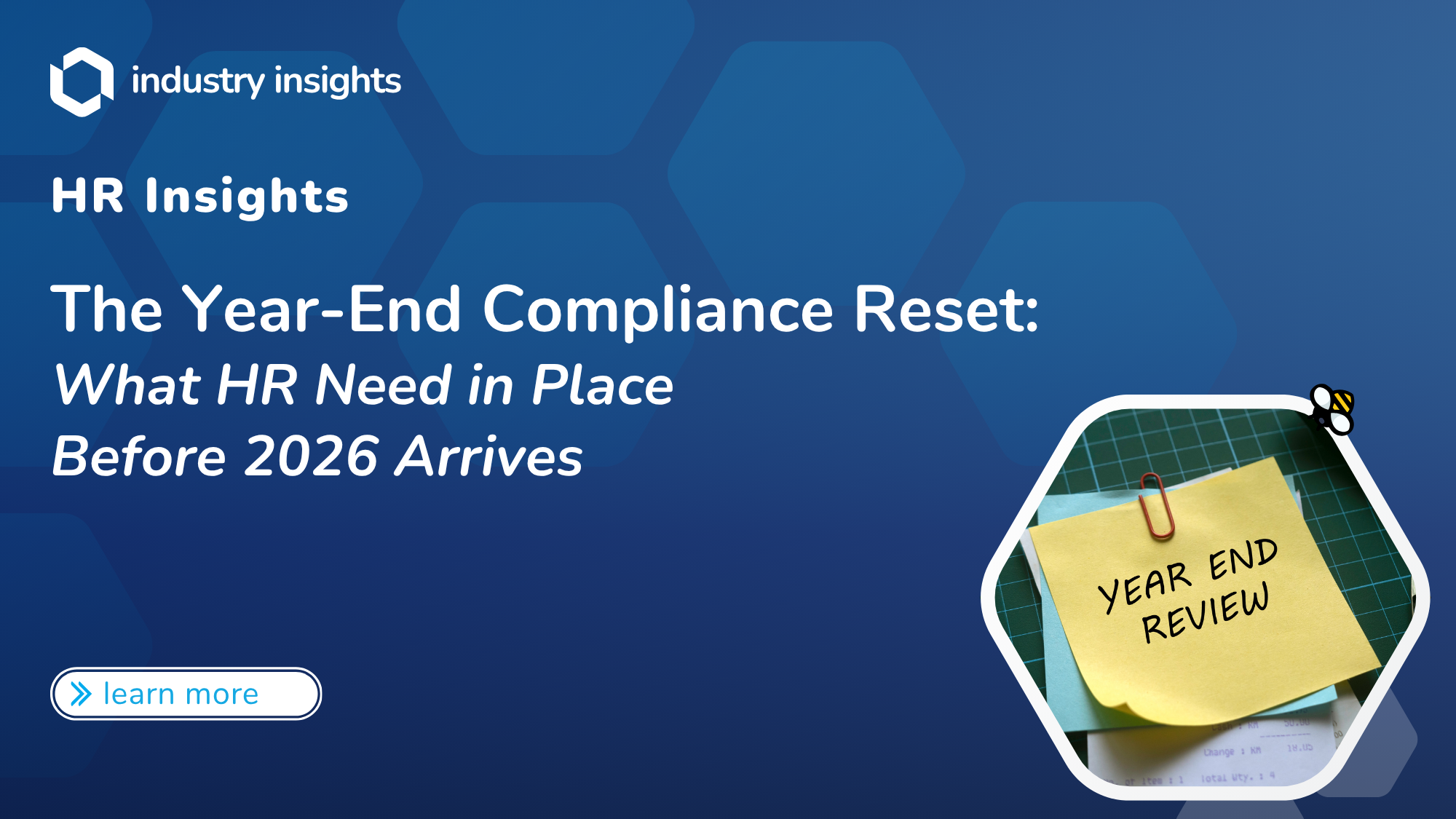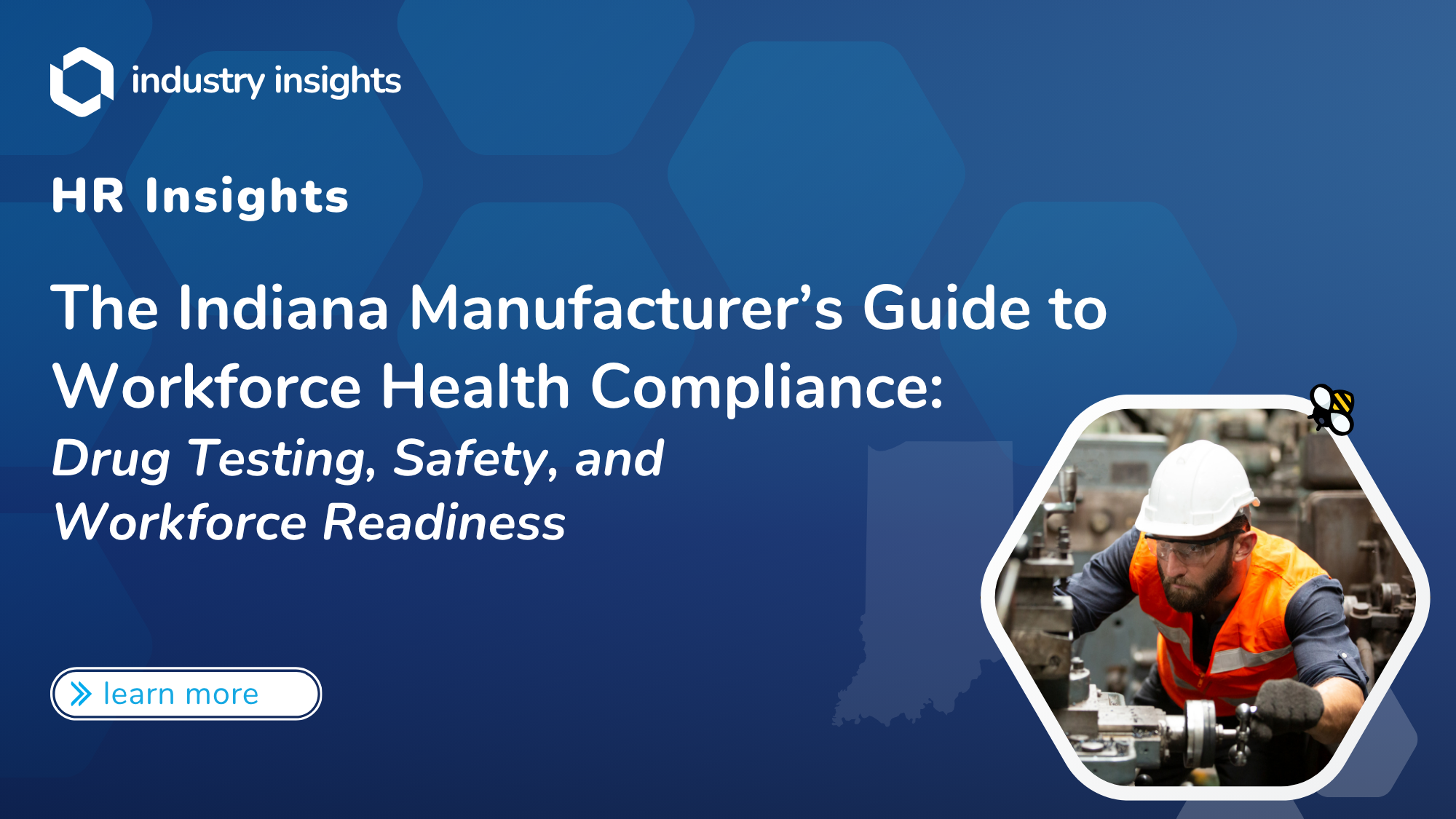Year end isn’t just about holiday parties and handing out W-2s. For HR teams, it’s a critical tipping point. As the calendar turns, unfinished compliance tasks, expired credentials, incomplete documentation, and ad-hoc workflows all converge – creating risk, admin chaos, and delayed starts for the new year.
By proactively hitting the “reset” button now, HR can close out 2025 with confidence and launch 2026 with clarity, structure and less stress. This whitepaper offers a practical roadmap to finishing the year strong, with actionable steps and checklists tailored for HR professionals managing occupational-health, safety and workforce compliance.
Download the Whitepaper
The Year End Pressure Cooker:Why December Is Make or Break for HR
As December approaches, HR teams face more than the usual incoming vacation requests and seasonal hiring. They’re often dealing with:
- A surge in health-screening, physicals, immunizations and drug testing closing out the calendar year.
- Credential renewals that have slipped through the cracks and now demand immediate attention.
- Last-minute documentation and audits for safety, OSHA, insurance and internal records.
- Hybrid and remote staffing that complicates oversight of health and safety compliance.
- A backlog that spills until January, causing January to feel more like “cleanup month” than planning month.
These pressures translate into real costs – not only in admin hours and stress, but in risk exposure. By framing December as a strategic closing window instead of just another busy month, HR can shift from reacting to preparing.
The Compliance Blind Spots Employers Miss Every December
When HR teams take a step back and audit their year end, the following items often appear as weak links:
- Expired or soon-to-expire credentials: From licenses and certifications to trainer qualifications.
- Incomplete drug screening or physical exam records: Applicants, employees or contractors who started workflows but never finished them.
- Missing immunization and titer documentation: Especially relevant in healthcare, manufacturing, safety-sensitive roles.
- Randomised testing programs that weren’t truly random: A common error in regulated industries.
- Hybrid/remote workforce gaps: When employees aren’t physically in one place, oversight of health/compliance tasks often falters.
- Disparate data systems: Documentation spread across spreadsheets, shared drives, email threads – making audits tedious and error-prone.
Mini Checklist:Top 10 Overlooked Items HR Should Audit Before December 31
- All credentials, certifications, licenses due to expire in the next 90 days.
- All physical exam workflows initiated but not completed.
- All drug screening results awaiting documentation or follow-up.
- Immunization/titer records missing or invalid.
- Random testing pools reviewed and validated for completeness.
- Remote workforce health-compliance records up to date.
- All employee health records consolidated in one view.
- All contractor/third-party worker documentation audited.
- Automated reminder workflows (for 2026) set up and tested.
- HR/safety leadership debrief scheduled for early January to review “what got missed”.
What’s Changing in 2026: Regulations, Trends, and Workforce Shifts HR Should Prep For Now
Looking ahead to 2026, HR leaders must recognize that year-end isn’t just an operational wrap-up; it’s a strategic launchpad. Key changes and trends include:
- The emergence of new state and federal occupational health regulations (for instance, increased emphasis on mental health, workplace violence prevention, and heat illness prevention) as part of Occupational Safety and Health Administration (OSHA) updates (HSE, 2025).
- Expanding “pay transparency” laws and artificial-intelligence hiring regulation (both intersecting with compliance and workforce health strategy) (Paychex, 2025).
- The ongoing multi-state/hybrid workforce complexity: documentation, tax, health screening and safety become more distributed and harder to track (Pulse HR, 2025).
- A continuing push toward data-driven health & wellness programs. Using the year-end audit to gather baseline data positions HR to shift from reactive tasks to proactive workforce health planning.
- Increasing penalties and enforcement-risk for safety and health non-compliance. For example, updated OSHA checklists show more rigorous expectations in 2025 and beyond (The HIPAA Journal, 2025).
HR teams that treat year-end as simply “finish what’s left” will miss the opportunity to gear up for 2026’s evolving landscape.
The Year-End Compliance Reset Framework
Here is a step-by-step roadmap that HR teams can use to reset compliance workflows for the year-end and position themselves for the year ahead.
Step 1: Centralize All Workforce Health Data
- Pull together every credential, exam record, immunization, drug screen, fitness-for-duty form and safety training certificate.
- Identify missing or expired items.
- Align roles (safety-sensitive, regulated, remote) with required documentation.
- Use a centralized dashboard or platform so HR, EHS and health-providers all share the same view.
Step 2: Audit Every Role-Specific Requirement
- Segment workforce by role (e.g., DOT-regulated drivers, clinical staff, heavy-equipment operators, office).
- Map what each role needs from a health, safety and credentialing perspective.
- Verify that each employee in each segment is compliant by December 31.
Step 3: Close Gaps Quickly with Fast Access to Screening and Exams
- Prioritize workflows that are incomplete or missing.
- If using a national provider network (like the 22,000+ provider network BlueHive offers), schedule screenings/physicals now before January bottlenecks.
- Set realistic deadlines: e.g., “All DOT drivers must complete their 2025 physical by December 15.”
- Use reminder workflows for employees, hiring managers and providers.
Step 4: Standardize Protocols for 2026
- Convert lessons from the past year into standard operating procedures: what works, what doesn’t, roles & responsibilities.
- Reduce ad-hoc exceptions: fewer special cases = fewer gaps.
- Develop one shared process for onboarding (health check), annual exams, monitoring, renewals and documentation.
Step 5: Set up Automation and Reminders
- Build recurring reminders for each credential/exam type aligned to “due dates” (e.g., annual, biennial).
- Automate alerts for HR and providers when items are missing or expire.
- Use dashboards to display “compliance at a glance” for leadership.
- Ensure that documentation is stored and easily retrievable for audits.
The Cost of Skipping the Year-End Reset
Skipping or delaying the year end compliance reset isn’t just an admin nuisance – it carries real costs:
- Increased injury or illness risk: Expired safety training or physical exams may reduce readiness and increase incident likelihood.
- Audit penalties: Missing documentation or failed processes can lead to fines or regulatory scrutiny.
- Hiring delays: If health screenings or clearances drag into January, new hires stall and productivity suffers.
- Admin overload in January: Starting the year behind means HR and EHS teams are reacting instead of planning.
- Reputation risk: A large-scale compliance failure can harm employer brand and employee trust.
How Platforms Like BlueHive Make Year End Compliance Much Easier
- Unified dashboards that display missing credentials, upcoming expirations and screening status – giving HR one source of truth.
- Access to a broad nationwide provider network (22,000+ locations) that allows scheduling physicals, immunizations and screenings quickly and efficiently.
- Automated reminders and workflows reduce manual tracking and follow-ups (fewer sticky notes, fewer spreadsheets).
- Data capture and reporting capabilities that help HR measure performance and compliance trends – priming them for proactive planning instead of reaction.
Year-End Compliance Checklist for HR Teams

Conclusion
December is more than a final push – it’s the strategic launch pad for a smoother, stronger 2026. HR teams that take the time to reset, standardize and automate now will avoid January chaos, reduce risk and reclaim time for what matters most: supporting people, not shuffling paperwork. Use this year-end reset to give your team the gift of clarity, efficiency and confidence heading into the new year.
Sources
- HIPAA Journal. (2025, April 4). OSHA Compliance Checklist – Updated for 2025. https://www.hipaajournal.com/osha-compliance-checklist/
- HSE Study Guide. (2025, April 27). OSHA New Rules 2025: What Employers Must Know. https://www.hsestudyguide.com/osha-new-rules-2025/
- JH HR Consultants. (2025, September). End-of-Year HR Compliance: Key Deadlines and What Small Businesses Need to Know. https://www.jhhrconsultants.com/post/end-of-year-hr-compliance-key-deadlines-and-what-small-businesses-need-to-know
- Keka HR. (2025, June 10). HR Compliance Trends 2025: Navigating the Future. https://www.keka.com/us/blog/hr-compliance-trends
- OutSolve. (2025). New Year, New Compliance: 2025 Guide to Critical HR Compliance Law Updates. https://www.outsolve.com/blog/new-year-new-compliance-2025-guide-to-critical-hr-law-updates
- Paychex. (2025, November 6). 2025 Year-End HR Compliance Checklist for Employers. https://www.paychex.com/articles/human-resources/year-end-hr-tips-for-employers
- Pulse HR Solutions. (2025, March 6). HR Compliance in 2025 | What You Need to Know. https://www.pulsehrsolutions.com/post/hr-compliance-in-2025-adapting-to-emerging-regulatory-changes/
- TriNet. (2024, December 18). Your Complete HR Compliance Checklist. https://www.trinet.com/insights/your-hr-compliance-checklist




